ASUS VivoBook F505/X505 review – a nice budget notebook with a Ryzen processor
 The ASUS VivoBook F505 is something fresh in the brand’s lineup. It’s a budget device but it leaves you with a good impression after the first glance. With a starting price of only $499, you can’t consider expecting a lot from it but when you spend some time with it you might start to like it.
The ASUS VivoBook F505 is something fresh in the brand’s lineup. It’s a budget device but it leaves you with a good impression after the first glance. With a starting price of only $499, you can’t consider expecting a lot from it but when you spend some time with it you might start to like it.
For the price, you get a metal lid complementing the plastic construction, decent display options and narrow bezels, and hardware which can get fairly powerful. The VivoBook F505 is AMD-based featuring up to a Ryzen 7 2700U and 16GB of RAM which is plenty enough for most users. We will take a look at all these features in this review.
It’s definitely not a ZenBook experience but for a few hundred bucks you can’t get much more.
You can check the prices and configurations in our Specs System: https://laptopmedia.com/series/asus-vivobook-15-f505-x505/
Contents
Specs Sheet
ASUS VivoBook 15 F505 (X505) technical specifications table
What’s in the box?
Inside the box, you can find the notebook itself, a 45W power adapter, a quick-start guide, warranty card, and something which we haven’t seen since the time when dinosaurs roamed the Earth – a drivers DVD.
Design and construction
As we stated in the intro, you shouldn’t expect much from the construction but surprisingly good considering the price. The lid is made of aluminum with a brushed finish. It flexes a bit but nothing too serious. However, the screen noticeably bents in the center between the hinges. The plastic back cover is extremely sturdy. It has a couple of vents, four rubber feet, and two speaker grills.
Opening the lid reveals the 15.6-inch display with NanoEdge bezels. The side bezels are indeed thin while the bottom and top lids are just average-sized. ASUS claims 81% screen-to-body ratio. Be gentle with the screen – pressing in the center of the bottom lid causes a terrible flex.
The area around the keyboard and especially the palm rest area imitate metal fairly well. Unfortunately, they flex as well. The keyboard lack a num pad which is a bit odd for a 15.6-inch notebook, however, there is an additional column with a home, page up/down, end, and fn keys. The keys are large which is always welcomed but some of them like the right shift or enter keys are unnecessarily big. The overall layout is not very common and you may need some time to get used to. The keyboard has not backlit and the overall typing experience is fine but nothing special.
The touchpad is accurate and responsive. It supports all the Windows 10 gestures. The dimensions of the notebook are likable – it is fairly thin measuring a thickness of 18.9 mm (0.74″). It’s also quite light for a 15.6-inch laptop – only 1.60 kg (3.53 lbs).
| Width | Length | Height | Weight | |
|---|---|---|---|---|
| ASUS VivoBook F505 | 361.4 mm (14.23″) | 243.5 mm (9.59″) | 18.9 mm (0.74″) | 1.60 kg (3.53 lbs) |
| Dell Vostro 15 7580 | 389 mm (15.31″) | 270 mm (10.63″) | 25 mm (0.98″) (+32%) | 2.83 kg (6.2 lbs) (+77%) |
Ports
The ASUS VivoBook F505 has a good selection of ports considering its price. They are evenly spread between both hand-sides.
On the left side, you can find the DC power input, an RJ45 port, an HDMI, a single USB 3.0 port, and a USB Type-C port. In our opinion, the addition of a Type-C port is a huge bonus for this notebook because it’s a very low-budget device and most of the competitors in this price range still lack a Type-C port.
The right side offers a security lock, two USB 2.0 (unfortunately not 3.0), a 3.5 mm headphone/mic jack, an SD card reader, and two notification LEDs.
Disassembly, upgrade options and maintenance
Disassembly of the ASUS VivoBook F505 is no easy task and upgrading isn’t much easier so we advice buying the right configuration or giving it to a professional when upgrading.
First, you have to remove 11 Philips screws. You remove the lid that holds the keyboard instead of the back lid like most other notebooks. The plastic bends easily so be careful when removing. Also, you have to disconnect the touchpad and keyboard cables before fully removing the cover.
Once you have finally opened the notebook, your work isn’t done. The only RAM slot and M.2 slot are located on the other side of the motherboard so if you want to upgrade any of those two you have to perform a full disassembly. There are 4GB of memory soldered to the board and the M.2 slot reads only SATA drives which isn’t a surprise for the price.
You have easy access only to the Wi-Fi card and the 2.5-inch SATA slot. You can see the single fan next to the HDD caddy and the 42Wh 3-cell battery at the bottom.
Display quality
ASUS VivoBook F505 has a Full HD IPS panel with a model number AUO B156HAN02.1 (AUO21ED). The screen size is 15.6 inches and the resolution is 1920 x 1080p. The screen ratio is 16:9, the pixel density – 142 pixels per inch, and the pixel pitch – 0.18 x 0.18mm. The screen becomes Retina when viewed from a distance of more than 60 cm (from this distance the eye can’t tell the different pixels apart anymore).
Viewing angles are good. We offer images at 45° to evaluate the quality.
The maximum measured brightness is 251 nits (cd/m2) in the middle of the screen and 245 nits (cd/m2) average across the surface with a maximum deviation of only 6%. The Correlated Color Temperature on a white screen and at maximum brightness is 6500K (average) – which is in line with the optimal 6504K temperature for sRGB. The average color temperature through the grey scale before profiling is 6200K.
In the illustration below you can see how the display performs from uniformity perspective. In other words the leakage of light from the light source. The illustration below shows how matters are for operational brightness levels (approximately 140 nits) – in this particular case at 65% Brightness (White level = 139 cd/m2, Black level = 0.117 cd/m2).
Values of dE2000 over 4.0 should not occur, and this parameter is one of the first you should check if you intend to use the laptop for color sensitive work (a maximum tolerance of 2.0 ). The contrast ratio is very good – 1190:1 (1030:1 after profiling).
Color reproduction
To make sure we are on the same page, we would like to give you a little introduction of the sRGB color gamut and the Adobe RGB. To start, there’s the CIE 1976 Uniform Chromaticity Diagram that represents the visible specter of colors by the human eye, giving you a better perception of the color gamut coverage and the color accuracy.
Inside the black triangle, you will see the standard color gamut (sRGB) that is being used by millions of people in HDTV and on the web. As for the Adobe RGB, this is used in professional cameras, monitors etc for printing. Basically, colors inside the black triangle are used by everyone and this is the essential part of the color quality and color accuracy of a mainstream notebook.
Still, we’ve included other color spaces like the famous DCI-P3 standard used by movie studios, as well as the digital UHD Rec.2020 standard. Rec.2020, however, is still a thing of the future and it’s difficult for today’s displays to cover that well. We’ve also included the so-called Michael Pointer gamut, or Pointer’s gamut, which represents the colors that naturally occur around us every day.
The yellow dotted line shows ASUS VivoBook F505’s color gamut coverage.
Its display covers 55% of the sRGB/ITU-R BT.709 (web/HDTV standard) in CIE1976.

Our “Design and Gaming” profile delivers optimal color temperature (6500K) at 140 cd/m2 luminance and sRGB gamma mode.
We tested the accuracy of the display with 24 commonly used colors like light and dark human skin, blue sky, green grass, orange etc. You can check out the results at factory condition and also, with the “Design and Gaming” profile.
Below you can compare the scores of the VivoBook F505 with the default settings (left), and with the “Gaming and Web design” profile (right).
The next figure shows how well the display is able to reproduce really dark parts of an image, which is essential when watching movies or playing games in low ambient light.
The left side of the image represents the display with stock settings, while the right one is with the “Gaming and Web Design” profile activated. On the horizontal axis, you will find the grayscale and on the vertical axis – the luminance of the display. On the two graphs below you can easily check for yourself how your display handles the darkest nuances but keep in mind that this also depends on the settings of your current display, the calibration, the viewing angle and the surrounding light conditions.

Response time (Gaming capabilities)
We test the reaction time of the pixels with the usual “black-to-white” and “white-to-black” method from 10% to 90% and vice versa.
We recorded Fall Time + Rise Time = 26 ms.

PWM (Screen flickering)
Pulse-width modulation (PWM) is an easy way to control monitor brightness. When you lower the brightness, the light intensity of the backlight is not lowered, but instead turned off and on by the electronics with a frequency indistinguishable to the human eye. In these light impulses, the light/no-light time ratio varies, while brightness remains unchanged, which is harmful to your eyes. You can read more about that in our dedicated article on PWM.
The ASUS VivoBook F505 doesn’t use PWM to control the screen brightness making it suitable for prolonged use without causing eye strain.

Blue light emissions
Installing of our Health-Guard profile not only eliminates PWM but also reduces the harmful Blue Light emissions while keeping the colors of the screen perceptually accurate. If you’re not familiar with the Blue light, the TL;DR version is – emissions that negatively affect your eyes, skin and your whole body. You can find more information about that in our dedicated article on Blue Light.
You can see the levels of emitted blue light on the spectral power distribution (SPD) graph.
Conclusion
The VivoBook F505 has an IPS panel with Full HD resolution and comfortable viewing angles. The contrast ratio is very high and the maximum brightness is not bad as well. Another welcomed feature is the lack of PWM. The main disadvantage is the limited color range.
Buy our profiles
Since our profiles are tailored for each individual display model, this article and its respective profile package are meant for ASUS VivoBook F505 configurations with 15.6″ AUO B156HAN02.1 (AUO21ED) (FHD, 1920 × 1080) IPS.
*Should you have problems with downloading the purchased file, try using a different browser to open the link you’ll receive via e-mail. If the download target is a .php file instead of an archive, change the file extension to .zip or contact us at [email protected].
Read more about the profiles HERE.
In addition to receiving efficient and health-friendly profiles, by buying LaptopMedia's products you also support the development of our labs, where we test devices in order to produce the most objective reviews possible.

Office Work
Office Work should be used mostly by users who spend most of the time looking at pieces of text, tables or just surfing. This profile aims to deliver better distinctness and clarity by keeping a flat gamma curve (2.20), native color temperature and perceptually accurate colors.

Design and Gaming
This profile is aimed at designers who work with colors professionally, and for games and movies as well. Design and Gaming takes display panels to their limits, making them as accurate as possible in the sRGB IEC61966-2-1 standard for Web and HDTV, at white point D65.

Health-Guard
Health-Guard eliminates the harmful Pulse-Width Modulation (PWM) and reduces the negative Blue Light which affects our eyes and body. Since it’s custom tailored for every panel, it manages to keep the colors perceptually accurate. Health-Guard simulates paper so the pressure on the eyes is greatly reduced.
Get all 3 profiles with 33% discount
Sound
The ASUS VivoBook F5050 has good sound quality with clear low, mid, and high tones.

Drivers
You can find all the necessary drivers at ASUS’ support page: https://www.asus.com/bg/Laptops/ASUS-VivoBook-15-X505ZA/HelpDesk_Download/
Battery
The ASUS VivoBook F5050 is powered by a 42Wh 3-cell battery which is not big for a 15.6-inch notebook. Battery life is below average. You can get around 4 hours but no more which is a shame considering the low-powered hardware inside but this is a trend we see with the mobile Ryzen processors.
Now, we conduct the battery tests with Windows Better performance setting turned on, screen brightness adjusted to 120 nits and all other programs turned off except for the one we are testing the notebook with.
In order to simulate real-life conditions, we used our own script for automatic web browsing through over 70 websites.
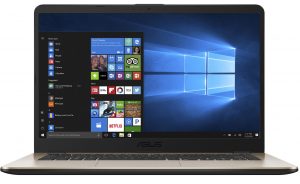

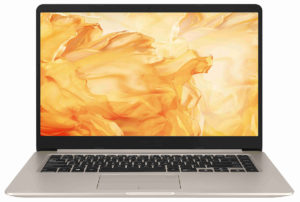
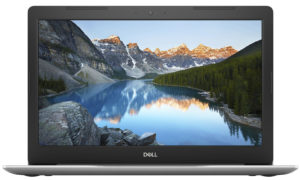
For every test like this, we use the same video in HD.




We use F1 2017’s built-in benchmark on loop in order to simulate real-life gaming.




CPU options
As we said before, the VivoBook F505 is a Ryzen-based notebook. You can choose from four different CPUs starting from the low-end Ryzen 3 2200U going all the way up to the Ryzen 7 2700U. These are all chips with 15W typical TDP which corresponds to Intel’s ULV chips like the Core i5-8250U or the Core i7-8550U.
Our particular model features the Ryzen 7 2700U.
Results are from our Photoshop benchmark test (the lower the score, the better)
Results are from the Fritz chess benchmark (the higher the score, the better)
GPU options
ASUS hasn’t made room for a dedicated GPU so you have to rely on the integrated one. Our model with a Ryzen 7 2700U CPU features the integrated RX Vega 10. Although not so powerful, the Vega 10 is a bump over the wide-spread Intel UHD Graphics 620.
If you wonder, the GPU has 512 MB of preallocated memory assigned to it.
Results are from the 3DMark: Time Spy (Graphics) benchmark (higher the score, the better)
Results are from the 3DMark: Fire Strike (Graphics) benchmark (higher the score, the better)
Results are from the Unigine Superposition benchmark (higher the score, the better)
Gaming tests
The RX Vega 10 is way better in comparison to the Intel HD Graphics 620 but this doesn’t actually mean it is suitable for gaming. You can possibly enjoy some games at the lowest settings and 720p resolution but nothing more. The RX Vega 10 is roughly as powerful as the MX110.

| CS:GO | HD 720p, Low (Check settings) | HD 720p, Medium (Check settings) | HD 720p, MAX (Check settings) |
|---|---|---|---|
| Average FPS | 68 fps | 55 fps | 44 fps |

| Grand Theft Auto V (GTA 5) | HD 720p, Normal (Check settings) | HD 720p, High (Check settings) | HD 720p, Very High (Check settings) |
|---|---|---|---|
| Average FPS | 42 fps | 17 fps | 13 fps |
Temperatures and comfort
We have a new way of torturing laptops, and for gaming machines, it comprises of 100% CPU load plus real gameplay test (Rise of the Tomb Raider).
The ASUS VivoBook F505 is not a gaming notebook but we conducted a GPU stress test anyway. We wanted to see what the integrated Radeon Vega RX 10 can handle and to be fair the results aren’t bad.
Max CPU load
In this test we use 100% on the CPU cores, monitoring their frequencies and chip temperature. The first column shows a computer’s reaction to a short load (2-10 seconds), the second column simulates a serious task (between 15 and 30 seconds), and the third column is a good indicator of how good the laptop is for long loads such as video rendering.
Average core temperature (base frequency + X); CPU temp.
| Ryzen 7 2700U (15W TDP) | 0:02 – 0:10 sec | 0:15 – 0:30 sec | 10:00 – 15:00 min |
|---|---|---|---|
| ASUS VivoBook F505 | 3.10 GHz (B+41%)@ 64°C | 2.95 GHz (B+34%)@ 72°C | 2.24 GHz (B+2%)@ 63°C |
We are glad to see that the cooling system of the VivoBook F505 can manage to keep such low temperatures under heavy load. Even more, the clock speed is well above the base frequency at least for the initial 30 seconds. After a prolonged load, the clock drops to its base value but the temperature remains lower than the average.
Real gameplay
| GPU frequency/ Core temp (after 2 min) | GPU frequency/ Core temp (after 30 min) | |
|---|---|---|
| Radeon RX Vega 10 | 858 MHz @ 67°C | 578 MHz @ 58°C |
The RX Vega 10 has a boost clock of 1300 MHz and idles at 400 MHz when unloaded. During the first few minutes, you get a clock of about 800 MHz which then gradually drops to about 578 MHz over the course of the test. The frequency isn’t high but nor is the temperature either. Speaking of the temperature, it drops below 60°C when the clock drops.
Gaming comfort
The cooling system of the VivoBook F505 is surprisingly good. After 30 minutes of gaming, the surface temperature barely tops 40°C which is quite low. The images below show how the heat spreads across the surface and the exact value in one of the hottest areas.
Verdict
 The ASUS VivoBook F505 turned out to be a great budget-friendly notebook. With a starting price of just $499 you can’t ask much from it but still, you can configure it with up to a Ryzen 7 2700U which provides plenty of performance for most users.
The ASUS VivoBook F505 turned out to be a great budget-friendly notebook. With a starting price of just $499 you can’t ask much from it but still, you can configure it with up to a Ryzen 7 2700U which provides plenty of performance for most users.
We are particularly fond of the weight of the notebook – just 1.60 kg and the addition of a USB Type-C port at this price. You also get some fairly premium features like relatively thin screen bezels. And to be fair, the cooling system handles our stress tests better than a lot of competitors.
Of course, there has to be something which isn’t so perfect to keep the price so competitive. For instance, we are fairly disappointed with the battery life. Four hours might get you through the day depending on your usage but it can’t compare to what we are used to with Intel’s ULV chips.
The build quality is a bit questionable. The notebook has a metal lid which adds a nice touch to the overall construction but the area around and above the hinges is quite flexible. We are also not fans of the keyboard. It is comfortable for typing but the untraditional layout might take some time to get used to and there is no illumination.
Another thing we don’t like is that it’s very hard to access your basic components like RAM or SSD. Moreover, the disassembly itself isn’t too easy.
This was the second notebook with a Ryzen 7 7200U CPU that we have tested. The best comparison and alternative would be the Acer Swift 3 which was the first that came with this processor. There is also the ASUS VivoBook S15 which is a very similar notebook to the F505 but powered by Intel. If you can spend some more money, you can go for the entry-level ThinkPad – the Lenovo ThinkPad E580.
You can check the prices and configurations in our Specs System: https://laptopmedia.com/series/asus-vivobook-15-f505-x505/
Pros
- USB Type-C
- Lightweight – 1.60 kg (3.53 lbs)
- No PWM (AUO21ED)
- Narrow screen bezels
- Good cooling system
- Affordable price
Cons
- Limited color range (AUO21ED)
- Subpar battery life
- Not a traditional keyboard layout
- A lot of flex on some parts of the chassis
- No keyboard backlight
- Hard to maintain and upgrade


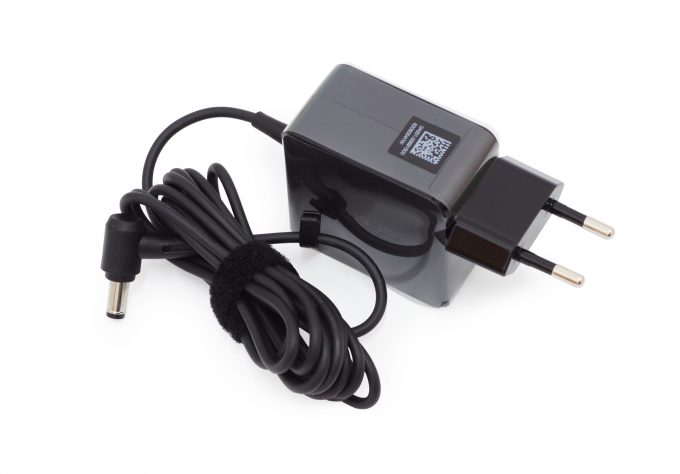















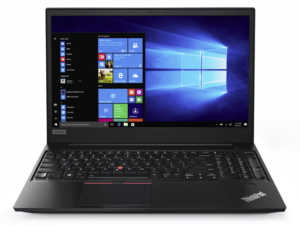
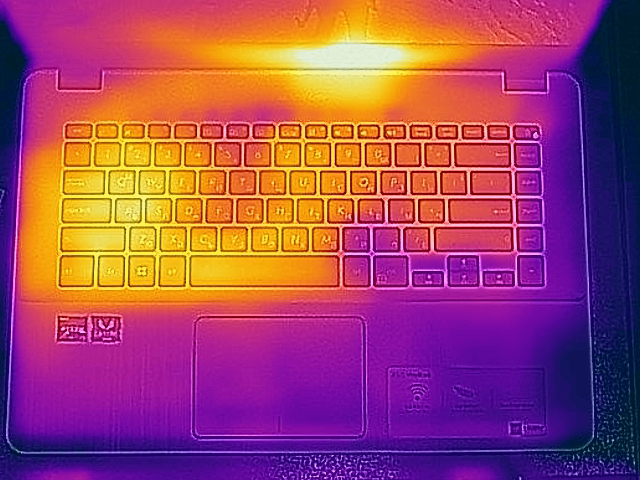
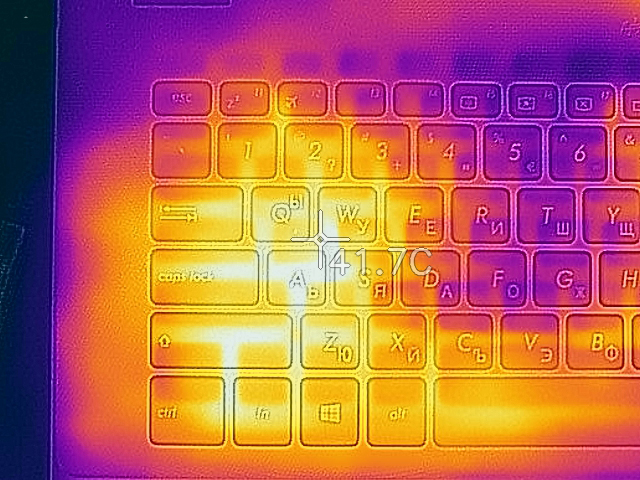








how about the same but 17 inches? can you guys ask asus about it please? 🙂 i want one.
also 2700u is useless as usual. extra 100usd above 2500u for nothing. and why did you even take such a weak configuration? I never understood that. media should look at the market through the eyes of the buyer and not being dumb robots. 4gb memory? no ssd? no thank you.
also nice to see ryzen 3 2300u as an option. maybe the best choice here.
Thank you for the great review. Could you guys do a complete teardown/disassembly tutorial? It’s impossible to find anything on the web
Thank you for the review. About the screen that bend, does it means that it could crack or break easily?